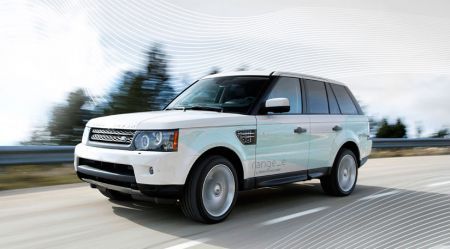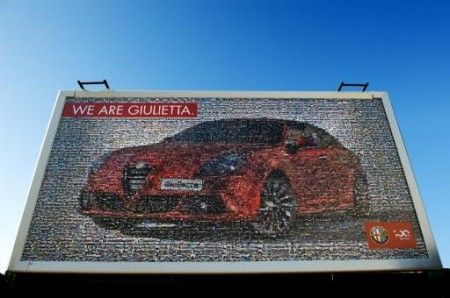In 1976, two years after the debut of what became the best-selling Volkswagen, Wolfsburg's engineers presented the world its first diesel version of the Golf. We celebrate, then, the first 35 years after its debut on the market for a Golf diesel, the model that has contributed more than anyone to reconsider the use of diesel cars.
The distinctive clicking sound, which until then was called "The noise of the poor", changing clothes, it became universal, and made the Diesel a mass phenomenon. Much of the credit should be attributed to the first Golf Diesel: look at the technical characteristics of the "grandmother" of the sixth series.
Thirty years ago, the Golf was equipped with a 1.5-liter four-cylinder. The power was not exciting, just 80 Nm at 3000 rpm and 50 hp, few if seen through the eyes of motorists today, who over the years has become accustomed to the injection common rail, direct, multipoint and a gradual downsizing engine.
However, consumption was remarkably low, especially considering the price of diesel in 1976 - at a time when, in Italy, the "super-bubble" that would bring the cost of diesel fuel a car almost like a model corresponding to gasoline, not yet exist - that 35 years ago was half that of gasoline: average just 6.5 liters per cycle.
All this for a maximum speed of 141 km / h. Values that today help us to understand how advanced the technology of diesel engines. An example? We take Golf 1.6 BlueMotion. The displacement, since the first Golf Diesel, is very similar, but under the hood, the supercharged four-cylinder delivers 105 hp at 4400 rpm and 250 Nm of torque at a speed between 1500 and 2500 rpm.
Fuel consumption comes less than four liters per 100 km, the maximum speed exceeds 180 km / h. Obviously there is history between the 1976 Golf Diesel, and the sixth series. Sure, there are those who - as we reported some months ago - has radically changed its Golf "first series" Diesel GTI.
But the comparison between both models should not be seen as a technical comparison, the rapid technical developments and practical explanation of the Volkswagen Golf Diesel. Again: much of the credit must be credited to small (less than 3 meters in length and 70, from the current 4.20) Golf Diesel, whose design is derived from the model designed by Giugiaro.
And to think that, in the early 70's, with the change at the top Volkswagen, VW then-new president was not convinced of the lines of that demonstrated that, today, is Volkswagen's best-selling ever ... 


The distinctive clicking sound, which until then was called "The noise of the poor", changing clothes, it became universal, and made the Diesel a mass phenomenon. Much of the credit should be attributed to the first Golf Diesel: look at the technical characteristics of the "grandmother" of the sixth series.
Thirty years ago, the Golf was equipped with a 1.5-liter four-cylinder. The power was not exciting, just 80 Nm at 3000 rpm and 50 hp, few if seen through the eyes of motorists today, who over the years has become accustomed to the injection common rail, direct, multipoint and a gradual downsizing engine.
However, consumption was remarkably low, especially considering the price of diesel in 1976 - at a time when, in Italy, the "super-bubble" that would bring the cost of diesel fuel a car almost like a model corresponding to gasoline, not yet exist - that 35 years ago was half that of gasoline: average just 6.5 liters per cycle.
All this for a maximum speed of 141 km / h. Values that today help us to understand how advanced the technology of diesel engines. An example? We take Golf 1.6 BlueMotion. The displacement, since the first Golf Diesel, is very similar, but under the hood, the supercharged four-cylinder delivers 105 hp at 4400 rpm and 250 Nm of torque at a speed between 1500 and 2500 rpm.
Fuel consumption comes less than four liters per 100 km, the maximum speed exceeds 180 km / h. Obviously there is history between the 1976 Golf Diesel, and the sixth series. Sure, there are those who - as we reported some months ago - has radically changed its Golf "first series" Diesel GTI.
But the comparison between both models should not be seen as a technical comparison, the rapid technical developments and practical explanation of the Volkswagen Golf Diesel. Again: much of the credit must be credited to small (less than 3 meters in length and 70, from the current 4.20) Golf Diesel, whose design is derived from the model designed by Giugiaro.
And to think that, in the early 70's, with the change at the top Volkswagen, VW then-new president was not convinced of the lines of that demonstrated that, today, is Volkswagen's best-selling ever ...



- Volkswagen Golf 'top business car' (28/01/2010)
- "Volkswagen Golf Cabriolet and Tiguan restyling live at 2011 Geneva Motor Show" and related posts (04/03/2011)
- Geneva 2011: 2012 Volkswagen Golf Cabriolet pops its top, just can't stop (02/03/2011)
- 2012 Volkswagen Golf Cabriolet drops its top for the drive to Geneva (23/02/2011)
- Second Spin: 2014 Volkswagen Golf Blue-e-motion (21/03/2011)
No comments:
Post a Comment